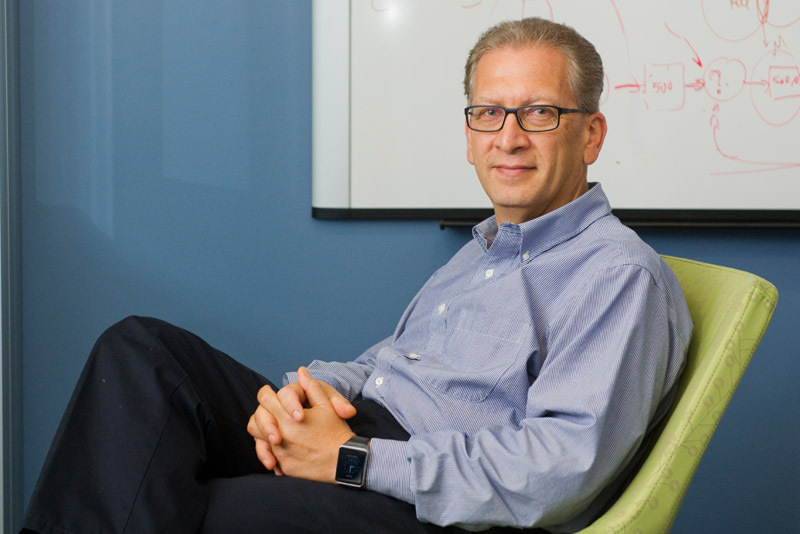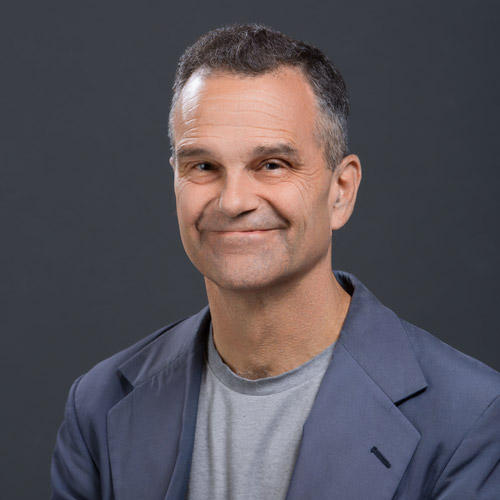Computational Thinking Breaks a Logjam
Hariri Institute helps address Boston’s male-female pay gap

Marty Walsh had a problem. Boston’s mayor wanted to address pay disparities between men and women, publicizing, as a first step, the average gap in different Boston industries. Normally, calculating that gap would require taking the actual pay gap at each company in an industry, adding them up, and then dividing by the number of companies to reach an average. But companies’ payrolls are proprietary, because their disclosure could be a boon to competitors, a black eye for the firms, and ammo for disgruntled employees who could sue over pay inequities.
Even if firms could trust a third party that swore secrecy to look at their numbers and calculate industry averages, hackers might breach that party’s online security and steal these precious informational nuggets.
“So this project hit a hurdle,” says Azer Bestavros, director of Boston University’s Rafik B. Hariri Institute for Computing and Computational Science & Engineering. “It wasn’t going to happen unless there was a way to do it, and there didn’t seem to be a way.”
Enter Bestavros, a BU College of Arts & Sciences (CAS) computer science professor, who proposed an ingeniously simple algorithm from computer science that will allow the city to calculate those industry pay averages, by gender, from a total of 60 participating employers, without any daylight shining on an individual company’s proprietary information. BU students and a Hariri colleague developed software to perform the algorithm.
How did Bestavros do it? Participating employers will enter the following data (for simplicity’s sake, let’s say we need to compare the salaries of male versus female software engineers, by computing the average salary across all participating companies of male and of female software engineers):
Each company computes the sum of the salaries of all of its male software engineers (call that M) and the sum of the salaries of all of its female software engineers (call that F). Then each company, independently, chooses two extremely large random numbers and adds one of these random numbers to its M sum and the other to its F sum and sends the results to the BU computer server. The server totals all the sums to get two numbers, X and Y.
Separately, using an intermediary, the companies add up their random numbers for males and their random numbers for females to obtain two other numbers (call them V and W) and sends those to the BU server. The BU server would then subtract V from X to obtain the sum of the salaries of all male software engineers across all companies, and would subtract W from Y to obtain the sum of the salaries of all female software engineers across all companies. Camouflaged by the random numbers and these mathematical steps, each company’s pay information remains undisclosed.
The software was developed by Andrei Lapets, a fellow at the Hariri Institute and a CAS computer sciences lecturer, and students Kyle Holzinger (CAS’16) and Eric Dunton (CAS’15).
This kind of algorithm, called multiparty computation, exemplifies how “computational thinking” can solve problems heretofore deemed insurmountable, Bestavros says. (Computational thinking involves reasoning with abstract information in ways common to mathematics and computer science.)
“Society thinks that things cannot be done when they can,” he says. “It’s not magic. It’s a simple algorithm.…We can compute things that would seem impossible to compute, given the constraints.”
The city will collect the data early in summer 2015 and publish a report once it’s analyzed. Participating employers have agreed to work towards pay equity, including anonymously reporting their salary information every two years to the Boston Women’s Workforce Council, an advisory body to Walsh based at Simmons College that’s overseeing the pay equity initiative. (Demonstrating his commitment, Walsh gave raises to two high-ranking female staffers.) The data will not only reveal gender comparisons, but also demographic ones—for example, the difference in pay between black men and black women in comparable jobs.
BU is not among the participants, but its affiliated teaching hospital, Boston Medical Center, is taking part, as are several educational institutions. Among other employers participating are the city, State Street, Raytheon, Putnam Investments, MassMutual Financial Group, and Blue Cross Blue Shield.
The city says white women workers in Boston make 83 cents for each dollar that men make, with women of color faring even worse. Hoping to address that, the Women’s Workforce Council spent more than a year brainstorming with global experts in fruitless pursuit of a data-gathering method that would ensure employers’ confidentiality, says executive director Christina Knowles.
“It proved impossible to find a solution—until we were introduced to Professor Bestavros,” she says. He and his BU colleagues “have been absolutely vital to our work. We owe our progress on this innovative and groundbreaking project” to them. Knowles says the project is the first of its kind in the country.
The city’s gender pay initiative began under Walsh’s predecessor, the late Thomas Menino (Hon.’01). After leaving the mayoralty, Menino was codirector of BU’s Initiative on Cities, whose executive director, Katherine Lusk, hooked up Bestavros with the Workforce Council after its data-gathering effort had stalled.

Comments & Discussion
Boston University moderates comments to facilitate an informed, substantive, civil conversation. Abusive, profane, self-promotional, misleading, incoherent or off-topic comments will be rejected. Moderators are staffed during regular business hours (EST) and can only accept comments written in English. Statistics or facts must include a citation or a link to the citation.